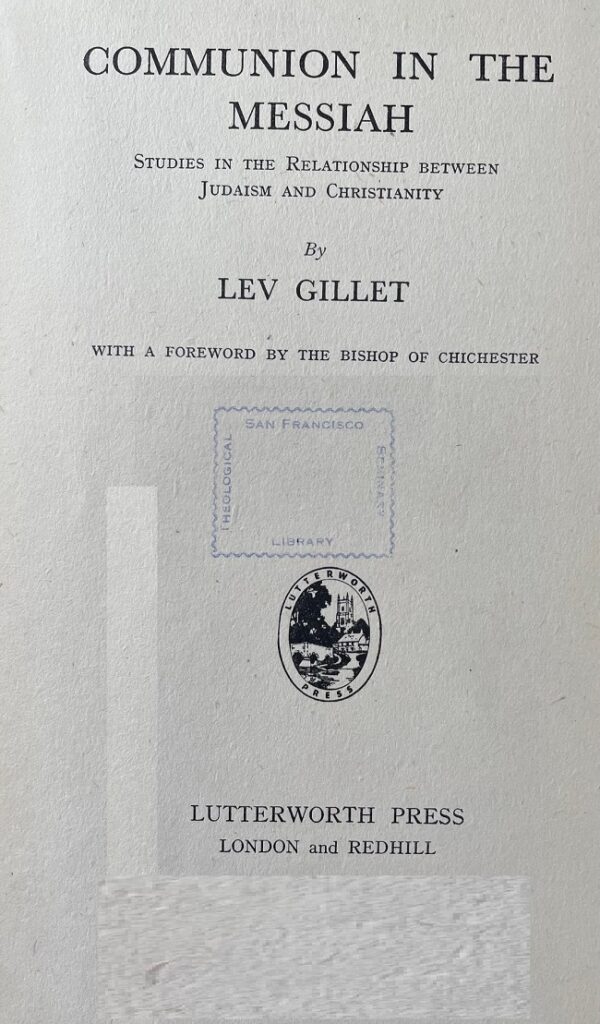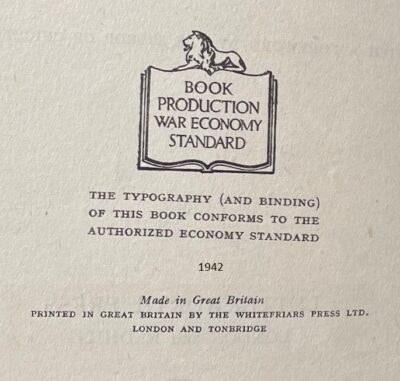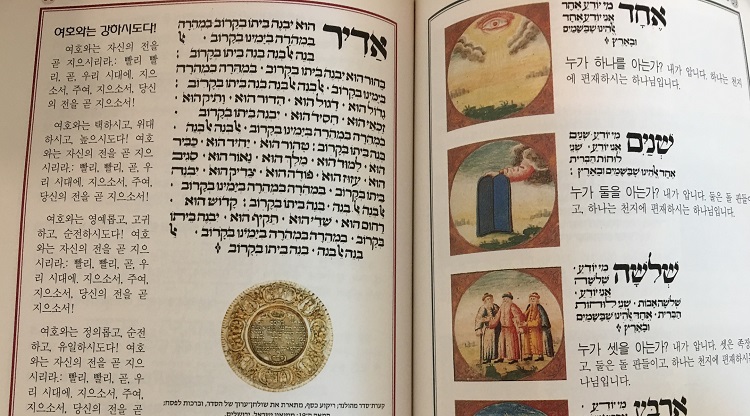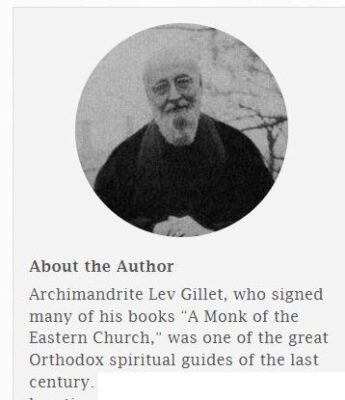LEGAL OR TALMUDIC TRADITION
***
“You must not take it too seriously. We never thought of it in that way. …”
***


 The greatest part of rabbinic tradition is expressed in the talmudic literature, i.e., in the text of the Talmud itself, the work of generations and centuries, or in the commentaries (e.g., Rashi) on this text. For a long time Christian scholars have recognized in the Talmud1 one of the highest products of the religious culture of mankind, but such an acknowledgement has still to overcome much ignorance and prejudice in the general—even the enlightened—-Christian public.
The greatest part of rabbinic tradition is expressed in the talmudic literature, i.e., in the text of the Talmud itself, the work of generations and centuries, or in the commentaries (e.g., Rashi) on this text. For a long time Christian scholars have recognized in the Talmud1 one of the highest products of the religious culture of mankind, but such an acknowledgement has still to overcome much ignorance and prejudice in the general—even the enlightened—-Christian public.
From the Middle Ages to our days, the Talmud has been the bogey of anti-Semitism. Even philo-Semites may show a strange ignorance in speaking of the Talmud. In his book Where now, Little Jew ?, 2, the Swedish writer, Magnus Hermanssdn, himself a Christian, moved by compassion for the tragic fate of Jewry, advocates entire assimilation and exhorts the Jews to “ give up the Talmud, their diabolical hatred of Jesus Christ ”3 and their arrogance, fed by Talmud study. To tell the truth, the greater part of modern Jewry no longer knows anything about the Talmud or cares for it. But it is to be wished that they were able to read it intelligently and to draw from it still a religious inspiration.
1 See A. Lukyn Williams, Talmudic Judaism and Christianity, London, 1933-
2 Translated by G. Djurklou and M. Weisman, New York, 1938.
3 p. 230.
If world Jewry were more conversant with the Talmud, its moral tone would be considerably higher. In any case, no Christian wishing to approach the Jews on religious ground can dispense with some knowledge of the Talmud and some genuine sympathy for many parts of it.
As these pages are not intended for scholars, it may perhaps be useful to remind the reader of—or to introduce him to—the contents of the Talmud. Such mystery still enshrouds this section of Jewish literature that very few people, among , non-specialists, have any exact notions when speaking of the ‘ Talmud.1
The word Talmud (“ teaching ”) does not designate a book, but a corpus, or, still better, a kind of library. In this library we shall distinguish two collections which both bear the name of Talmud : the Palestinian Tahnud, or Talmud of Jerusalem, and the Babylonian Talmud. We have already described the process of their formation.2
1 Besides A Short Survey of the Literature of Rabbinical and Mediceval Judaism (Chap. Ill) by Oesterley and Box, already mentioned, see Chaps. I and III of the Short Story of Jewish Literature by I. Abrahams, London, 1906, and Einleitung in den Talmud by H. Strack, Leipzig, 1908. A History of the Talmud constitutes the introductory volume of the translation of Rodkinson, New York, 1896. See also T. Herford, Talmud and Apocrypha, London, 1933.
2 H. Danby, The Mishnah translated from the Hebrew with Introduction and brief explanatory notes, Oxford, 1933 I W. H. Loewe, The Mishnah on which the Palestinian Talmud rests, edited from the unique Manuscript preserved in the University Library of Cambridge, 1883.
The two Taimuds have essentially the same composition. They juxtapose three elements: (i) a fundamental text or Mishnah; (2) a commentary on that text, the Gemar a; (3) some additional elements.
Mishnah. This term means “ learning by (oral) repetition.” It is supposed to be an interpretation of the Scripture. The text of the Mishnah is arrayed in six “ orders ” (sedarim) ; each order is divided into tractates, each tractate into chapters, each chapter into paragraphs. We have thus six orders containing sixty-three tractates as follows”:—(i) “Seeds”: eleven tractates on blessings, agricultural law’s, tithes, first-fruits. (ii) ” Festivals ” : twelve tractates on Sabbath, Passover, Temple-taxes, Day of Atonement, Tabernacles, New Year, Fasting, Purim (feast in remembrance of Esther), minor feasts, pilgrimages. (iii) “ Women ” : seven tractates on Levirate marriage, marriage-settlements, vows, Nazirites, adultery, divorce and betrothals, (iv) “ Damages ” : ten tractates on damages, property, trusts, usury (prohibited), law-courts, punishments, oaths, idolatry, maxims of the Fathers, legal decisions, (v) “ Holy Things ” : eleven tractates on sacrifices, meals, slaughter of animals, first-born, persons; and things dedicated to the Temple, excommunications, sacrileges, burnt-offerings, dove-offerings, (vi) “ Purifications ”: twelve tractates on sacred furniture Levitical uncleanness, leprosy, the red heifer, baths, menstruations, other defilements.
Gemara. This word is the Aramaic for “ learning.” According to another etymology, it means “ perfectioning.” The Gemara is a running commentary on the text of the Mishnah. It has the character of an amplification. Most times it is identified with the two first of the additional elements in such a way that one can hardly separate them.
Additional Elements. They are: {a) The tosephtah (“ supplement ”), a kind of parallel to the Mishnah proper, and covering the same ground, often illustrating it with anecdotes ; (6) the baraithas (“externals”), traditions not incorporated in the Mishnah and perhaps having the same relation to it as the apocryphal books to the canonical Scriptures ; (c) the “ minor tractates,” of which there are seven in the Babylonian Talmud and seven others in the Palestinian Talmud, the chief of these books being the Aboth de Rabbi Nathan.1
‘ The editio princeps oi the Babylonian Talmud was published in Vienna, 1520-1523: the editio princeps of the Jerusalem Talmud in Venice, 1523. The Jitomir edition of the Jerusalem Talmud, 1860-1867, is one of the best. Complete translations of the Talmud are.rather rare. See M. Schwab, Le I’almud de Jerusalem traduit pour la premiere fois, n vols., Paris, 1878-1889 ; 11 now English translation of the Babylonian Talmud (abridged) has been made by M. Rodkinson and edited by a “ New Talmud Publishing Company,” 16 vols., New York, 1896-1903. There are many excellent translations of isolated tractates of the Talmud, e.g., in English A Translation of the Treatise Ghagigah from the Babylonian Talmud -with Introduction, Notes, Glossary and Indices by A.Streane, Cambridge, 1891, and the already mentioned translations of the Sayings of the Fathers; and, among recent works, The Babylonian I’almud (Seder Nezikim and Seder Nastuim), translated into English with notes, glossary and indices under the editorship of Rabbi Dr. I. Epstein, London, 1935-1936.
As the words midrash, halakah, haggadah, are frequently met in connexion with talmudic literature, it may be useful to give their exact meaning.
Midrash=investigation, inquiry. A midrash designates a non-literal interpretation of the Scripture. There is a vast midrashic literature of which the oral origins date from the Old Testament times and which is broadly divided into two classes : midrash halakah (hal=binding law), or legal rules of practice, and midrash haggadah (hag— telling), homiletic and anecdotic explanation. Much midrashic material may be found in the Talmud, but there is an independent midrashic literature : e.g., the tractates Mekilta Sifre, to Numbers, Pesikta, Pirke de. Rabbi Eliezer, Midrash ha Gadol, etc. Midrashic books were still written in the 6th century A.D.1
These data may seem rather complicated, but, in reality, they are grossly simplified here.

We should now consider a few questions : Is the Talmud anti-Christian ? Is the talmudic literature the expression of a mere narrow legalism ? Has the Talmud any permanent value ?
The charge of being “ blasphemous ” has been brought forward against the Talmud by erstwhile Jews like Geronimo de Santa Fe (15th century) and Pfefferkorn (16th century). The Talmud has been burned many times under that charge, even as late as in 1757 (in Poland). Nevertheless all passages which could appear derogatory to Christianity were expunged in 1264, under Pope Clement. IV, and, between 1546 and 1581, by the censors of the Venice and Basel editions ; the Venice edition was personally revised by the Inquisitor Marco Marino, who affixed his name to every page. Many talmudic references to ancient idolatry were misinterpreted as attacks on Christianity.2 Reuchlin and modern scholars have seen justice done on these baseless attacks against the Talmud.
Now is the Talmud, as Christians too often think, a wearisome collection of formal rules ? This question affords us a good opportunity of making our minds clear about the meaning of the “ Law ” for the Jews.
It would be a mistake to consider that Paul’s argument, on the failure of the “ Law ” gives an exact representation of what is to be understood by the word “ Torah.” The Greek word nomos, “ law, 7 always used by Paul and so loaded with juridical meaning, is no equivalent of torah. The term lorah is less precise and more dynamic than nomos. It means “instruction” and also “direction.” For the Jews the Torah was very different from a legal code. It was the revelation and coming down of God to man, the communion of God with man, the very expression of God’s nature. Only in that light can we understand the rabbis when they say that all the world is not equivalent to a single word of the Torah and that God looked upon the Torah when He created the world. They said also that God Himself studies the Torah every day ; this may sound sheer extravagance to non-Jewish ears, but it will appear a powerful symbol if we grasp the fact that the Torah is the very communication of the mind and heart of God, of His essential truth and power, goodness and love. The Jewish attachment to the Law does not imply a slavish obedience to a written rule. One should rather, with Parkes, speak of the Torah as an “ Incarnation ” of the Divine. Travers Herford, with whom Montefiore fully agrees on this point, writes : “ It is near the truth to say that what Christ is to the Christian, Torah is to the Jew.”1 And Israel Abrahams : “ Those who tell the Jew that he has nothing to love with the passion which a Christian feels for Jesus forget Israel’s passion for the Law.”2 “ An only daughter was Mine, and I gave her unto you,” says God to Israel (in the Talmud), speaking of the Torah.3
If we understand this Jewish attitude to the Torah, we begin to see that the Talmud is not a petrified legalism. Every precept has a deep spiritual significance. Let us take, for instance, the dietary laws. Do they merely reflect a narrow superstition ? No, they foster a spirit of self-surrender, a continuous restriction placed on the appetites for the sake of duty ; they are part of the price to be paid for the privilege of belonging to Israel. If a Christian pours scorn on the dietary laws, what about Christian fasting and asceticism ?
But is not the Talmud full of casuistry and hair-splitting ? 11 is true that there is a very special talmudic dialectic, which is worth serious attention ;4 it is also true that there is a Christian casuistry not less complicated than the Jewish,3 and besides, casuistry (which means the application of the law to individual cases) is not necessarily an evil thing. We should keep in mind, too, the remarks of Montefiore and Loewe in the introduction to their Rabbinic Anthology. They suppose, between an ancient rabbi and a modern reader, a conversation which may be summarized like this : “
1 Pharisaism, p. 171.
• Some Permanent Values in Judaism, Oxford, 1924, p. 73.
• Op. cit., p. 83.
4 See special note H.
“ II. ,F. Stewart has written a comparative study of Jewish and Jesuit iwuiintry, Judaism and Christianity, vol. II, pp. 299-331.
Listen, rabbi, you said such and such a thing.—Oh, did I ? Well, if you say so . . .— But now you say opposite things !—Well, I have forgotten. Moreover, it was so long ago. And, you know, there are many things we said just because we loved to argue. If one said A, the other said B. You must not take it too seriously. We never thought of it in that way. …” Of course, this should be taken cum grano salis. In everything which the rabbis said there was some definite intention ; they never totally disbelieved their assertion of the moment; nevertheless one should not read into each one of their sayings a very deliberate and constant conviction. Rabbinic discussions had something lighter and more supple than the disputations of the Scholastics or of the Puritans.
There are contradictions in the Talmud ? Yes, but “ the very incoherence of the Talmud, its confusion of voices, is an index of free thinking,” as said Israel Zangwill.1
1 Chosen Peoples, p. 24.
What is the permanent value of the Talmud ? The Talmud aims at the penetration of the whole of human life by God’s presence. It does not confine worship to the hours of prayer, but sanctifies the home and its daily round of duties. So wide is its range that arts and sciences, agriculture and cooking, medicine and worship, jurisprudence and building are equally inspired by its spirit, which is the hallowing of life. This universality of the Talmud, this interconnexion of religion and every phase of life, saves the talmudic student from stagnation, and keeps him fresh-minded ; the. intelligent reading of the Talmud gives a perpetual contact with actualities and constitutes a liberal education in many disciplines. Far from being final and crystallized like a code, it reflects the continuity, the manifold steps, the progress and freedom of an organic evolution. Is it great literature ? It is certainly lacking in artistic form—though often intensely poetical; but, as surely as the Homeric poems and Greek tragedy, it is the unique expression of a people and a culture. It bears the mark of a supreme originality, for that people and that culture are above all theocratic. It expresses all the dreams and hopes, all the pangs and joys of Israel. As such it is not only a masterpiece of Jewish literature, but one of the summits in the history of the human mind.
Reformed Judaism does not give to talmudic literature the same place as does orthodox Judaism. Montefiore has explained how Reformed Judaism puts prophecy higher than Law. The Liberal Jew cannot regard the Law as the centre of Jewish belief and practice. If he were founding a new public worship, he would not make the reading of the Law its most important feature. If he were building a synagogue, he would not put scrolls of the Law into an ark; he would put in it the prophecies of Amos, Hosea and Isaiah, for the Prophets are more essential than the Torah. This does not mean that Liberal Judaism has rejected the talmudic tradition. In fact, as it has adapted the ancient worship and not founded a new one, it keeps the scrolls of the Law in the ark. The Liberal Jews have rebelled against a slavish acceptance of the Talmud’s authority, but they retain respect and affection for its spirit.
Frug,1 in his fine and pathetic Yiddish poem on the Talmud, compares its old leaves, yellow, spotted and worn, to a disused cemetery. But the Talmud “is not, never was, a cemetery; it was, it is, a moving sea on which sail the ships of living men.”2
1 Jewish Russian poet who wrote at the end of the last century.
2 Abrahams, p. 83.
The Basel editor of the 16th century said (and his words then implied that he had courage as well as a fine spiritual perception) that the Talmud may be read by Christians not only without reproach, but even with profit—etiam cum fructu a nobis legi potest.
1 Weber, Jiidische Theologie . . ., pp. xxiv-xxx, 1897 ; Hoffmann, Zur Einleitung in der Halachischen Midraschim (1886).
2 See jesus Christ in the Talmud, Midrash, Zohar, and the Liturgy of the Synagogue, texts and translations by G .Dalman, together with an introductory essay by H. Laible, translated and edited by A. Streane, Cambridge, 1893.
